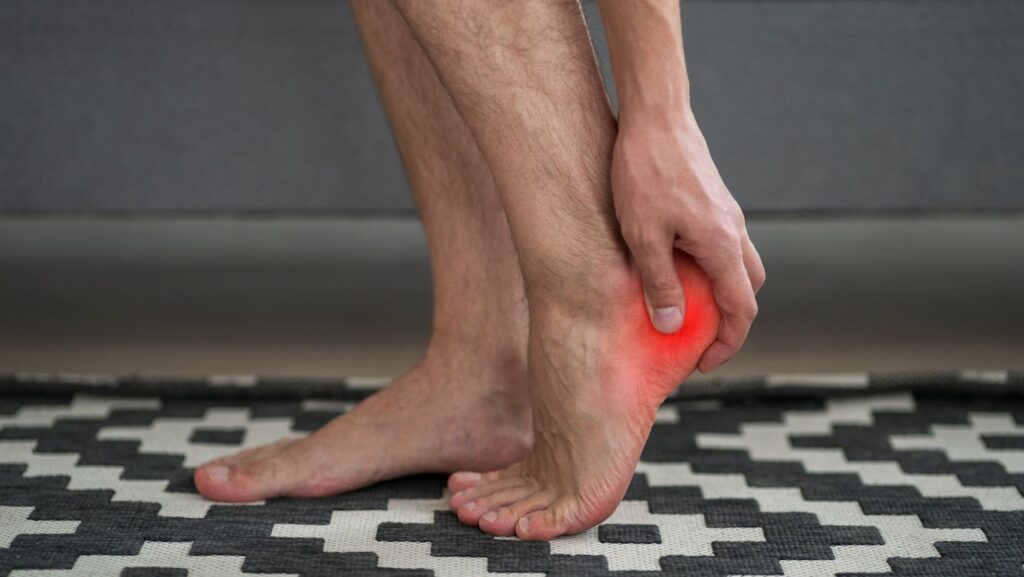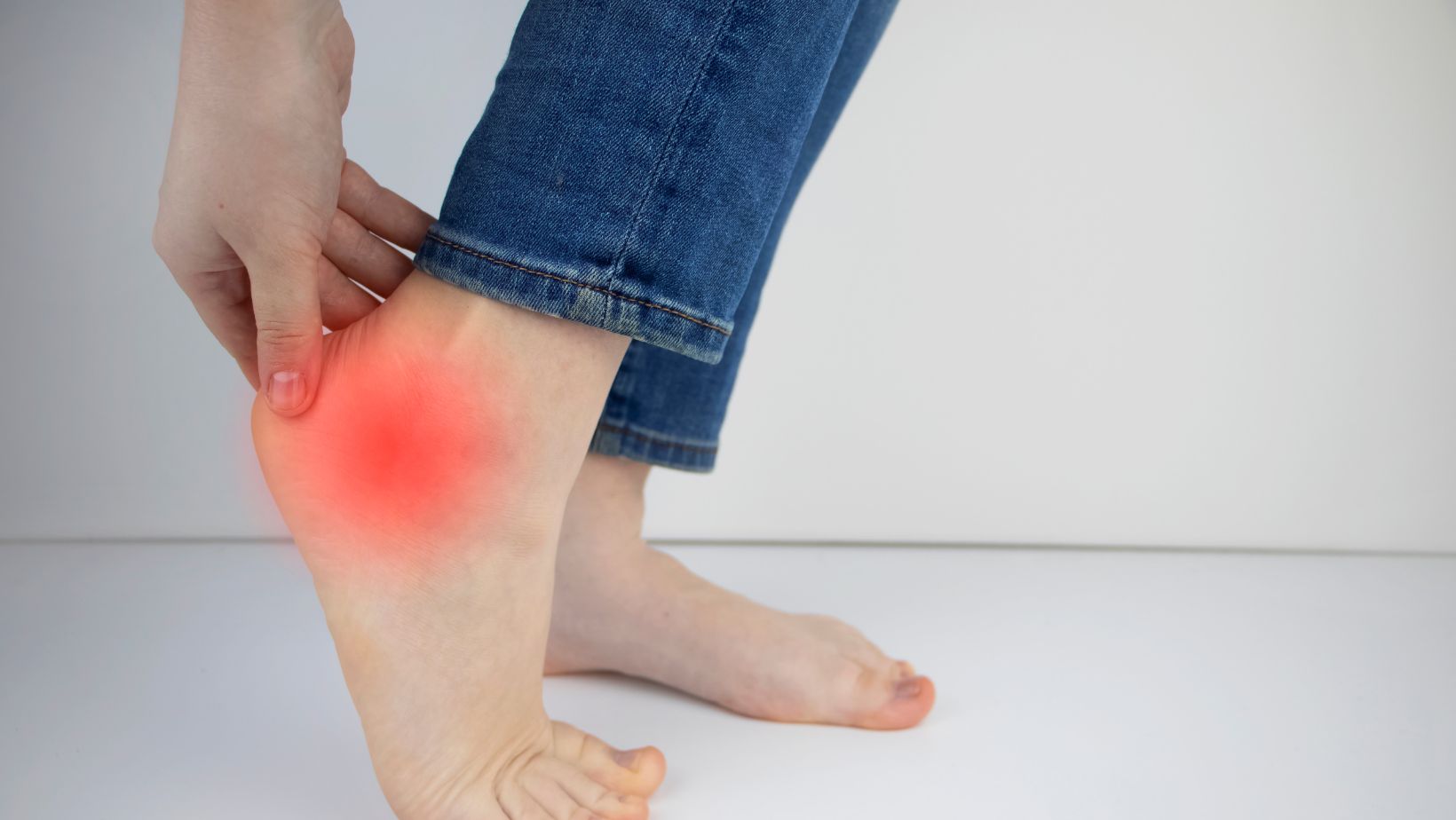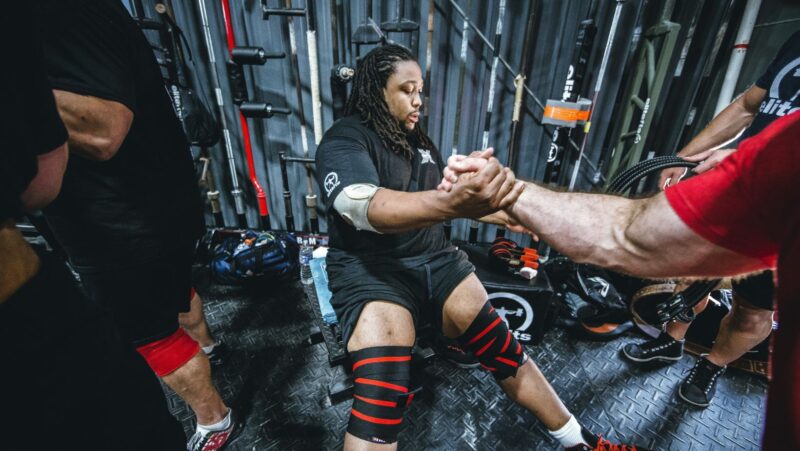
If you’ve ever winced with each step or sighed in relief when finally kicking off your shoes, you’re not alone. Heel pain is a common affliction that can turn the simple act of walking into a challenge. But don’t worry, there’s hope yet.
Understanding Heel Pain: Causes and Symptoms
In the quest for effective heel pain treatment, it’s crucial to comprehend the common causes and symptoms of this troublesome condition.
Common Causes of Heel Pain
Heel pain often traces back to a handful of key causes. First on the list is plantar fasciitis, an inflammation of the band of tissue running underneath your foot. It’s a common culprit and, in worst-case scenarios, can result in a painful heel spur. Secondly, Achilles tendinitis can also cause heel pain, this inflammation of the Achilles tendon can lead to severe discomfort. Thirdly, heel bursitis can occur due to overuse or injury, leading to pain in the deep back of the heel. Lastly, a condition named tarsal tunnel syndrome could be causing your heel pain. This involves a large nerve in the back of your foot becoming pinched.
Recognizing the Symptoms of Heel Pain
Recognizing the symptoms of heel pain forms the first step toward appropriate heel pain treatment. The most noticeable symptom is, naturally, the pain itself. This can range from a dull ache to a sharp, stabbing sensation, particularly noticeable when you first get out of bed in the morning. The painful area may also feel tender to the touch. Additionally, you might experience swelling around the heel and a limitation in your ankle’s range of motion if the cause of your heel pain is severe. Understanding these symptoms can help expedite your journey to finding effective relief for your heel pain.
Non-Surgical Treatments for Heel Pain
Numerous non-surgical heel pain treatment options exist, aimed at relieving discomfort and enhancing mobility. These strategies cater to individuals for whom surgery does not seem appropriate. I’ll delve into methods such as physical therapy, over-the-counter (OTC) medications and products, as well as shoe inserts and orthotics.
Utilizing Physical Therapy
Physical therapy emerges as a leading non-surgical method for heel pain treatment. It typically includes exercises and stretches designed to strengthen muscles, improve flexibility, and relieve heel pain. For instance, calf stretches and plantar fascia stretches prove beneficial in reducing the intensity of pain experienced. Physical therapy also includes innovative techniques like ultrasound therapy, which delivers sound waves to the affected area, promoting healing and reducing discomfort.
Over-the-Counter Medications and Products
OTC medications play a vital role in managing heel pain without resorting to surgery. Commonly used products include nonsteroidal anti-inflammatory drugs (NSAIDs), like ibuprofen or naproxen.

These medicines ease pain and reduce inflammation. Topical pain relievers, applied directly to the skin over the painful area, can also offer relief. Notably, it’s crucial to use these medications as directed to minimize side effects and ensure optimal results.
Shoe Inserts and Orthotics
Shoe inserts and orthotics offer a practical solution for alleviating heel pain. These specially designed devices fit into your shoes, providing extra cushioning, support, and improved foot alignment. There are off-the-shelf products available, but for more severe or specific cases, custom-made orthotics provide a tailored approach. For example, individuals with plantar fasciitis may benefit greatly from orthotics that offer good arch support, thereby reducing strain on the plantar fascia.
Surgical Treatments for Heel Pain
Delving deeper into heel pain treatments, surgical options come into play when non-surgical methods haven’t provided sufficient relief.
Heel Pain Surgery: What to Expect
When initial treatments like exercises, ultrasound therapy, over-the-counter medications, shoe inserts, and orthotics can’t treat heel pain adequately, it’s time to consider surgery. Primarily, these surgical procedures aim to alleviate discomfort from conditions such as plantar fasciitis and Achilles tendinitis.
Surgery might involve removing a small part of the heel bone to release tension, repairing damaged tissues, or even implanting a shoe insert inside the foot. Generally, the patient undergoes local anesthesia, and the procedure takes approximately 30 minutes. Details, as every procedure tends to differ due to individual circumstances and severity of the condition, can be gleaned from professional medical personnel.
- Remember, surgical intervention always depends on individual needs and health status.
- Acquaint yourself with all possible risks and outcomes prior to making a decision.
Post-Surgery Recovery and Rehabilitation
Recovery and rehabilitation post-surgery form as crucial a step as the surgery itself. After surgery, patients can be expected to wear a protective boot or cast for up to eight weeks as the foot heals, depending on recovery speed. During this period, patients often experience temporary discomfort, reduced mobility, and minor swelling.
Rehabilitation involves a course of physical therapy designed to restore strength and flexibility to the foot. Customized exercises form part of this therapy, helping regain functionality and lower the recurrence risk of heel pain.
- Pay attention to any unusual symptoms such as prolonged pain or increased swelling post-surgery.
- Regular follow-ups with the surgeon is a must to monitor recovery and address possible complications early.
Throughout the journey, patience and diligence in following prescribed care procedures become the patient’s close companions, moving him towards a successful heel pain treatment.
Natural Heel Pain Relief Options
Given the prior discussion on both non-surgical and surgical heel pain treatments, let’s consider natural strategies that can complement these approaches or offer relief when surgery isn’t the desired option.
Dietary Adjustments and Supplements
Proving the adage ‘you are what you eat’ correct, dietary choices can influence heel pain outcomes. Consuming an anti-inflammatory diet packed with fruits, vegetables, whole grains, and lean proteins can alleviate pain caused by inflammation, such as plantar fasciitis or Achilles tendonitis. Notably, foods rich in Omega-3 fatty acids, like salmon, chia seeds, and flaxseeds, help reduce inflammation.

Taking an Omega-3 supplement — after consulting your doctor — can aid those who find it difficult to include enough Omega-3 foods in their diets, contributing significantly to natural heel pain treatment. Furthermore, ensuring adequate Vitamin D consumption, either via diet or supplements, supports strong bones and muscles, important for the underpinning structures in our heels.
Applying Heat and Cold Therapy
Alternating between heat and cold treatments can provide relief and aid recovery. Applied to the affected heel, heat therapy improves blood flow, relaxes muscles, and reduces stiffness. Heat treatment sources include hot water bottles, heating pads, or warm baths.
Subsequently, cold therapy (ice application) reduces inflammation and numbs the area, thus alleviating pain. Ice should be applied indirectly — with a towel between your skin and the ice pack — to prevent skin damage. Perform heat and cold therapy for 15-minute intervals, sparingly throughout your day. Balancing these remedies may enhance your heel pain treatment effectiveness.










